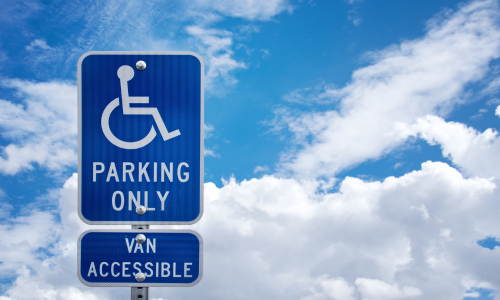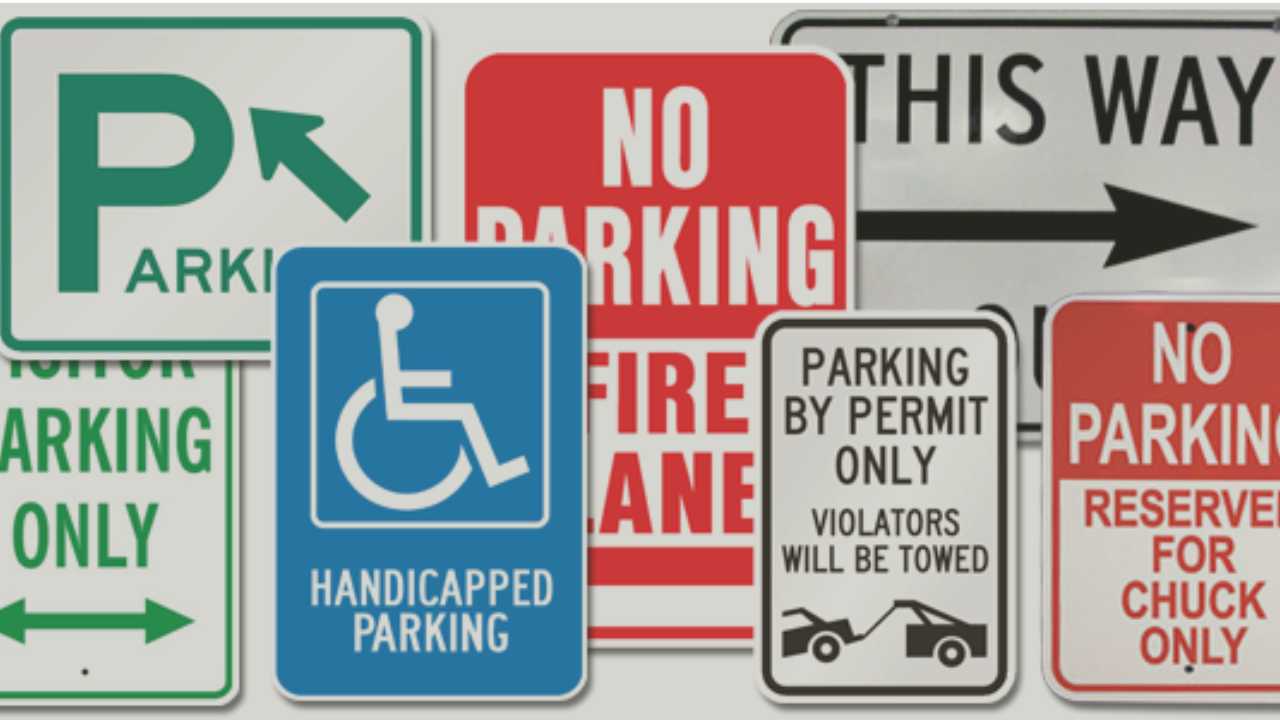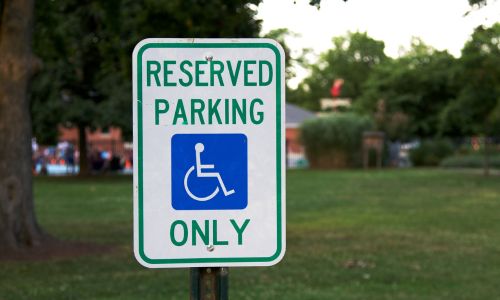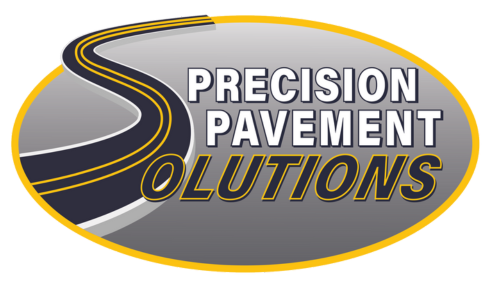Navigating the complex maze of parking lot signage standards is essential for any facility manager or property owner looking to ensure safety, compliance, and efficiency in their parking areas. From the clear display of ADA parking signage requirements to the strategic placement of no parking tow away signs and electric vehicle parking only signs, these signs guide visitors and enforce rules. This guide delves into the vital regulations and best practices that govern everything from parking lot number signs to no unauthorized parking signs, ensuring that your parking solutions are not only compliant with all levels of regulation but also optimally designed for clarity and effectiveness.
Understanding Parking Lot Signage Regulations
Parking lot signage plays a crucial role in managing traffic flow, ensuring pedestrian safety, and complying with legal standards. Understanding these regulations is essential for property owners and managers.
Federal and State Regulations
Federal and state regulations set foundational guidelines for parking lot signage. The most significant among these are the ADA parking signage requirements, which ensure accessibility for individuals with disabilities. These regulations specify the size, design, and placement of accessible parking signs to ensure visibility and readability.
Local Ordinances
In addition to federal standards, local ordinances may impose additional requirements on parking lot signage. These can include specifications for No Parking Tow Away signs or requirements for fire lane markings. Compliance with local laws is essential to avoid fines and legal challenges.

Types of Parking Lot Signages
Effective parking management requires various types of signs. Each serves a specific purpose, from ensuring safety to providing necessary information.
Mandatory Signs
Mandatory signs include those that enforce legal requirements, such as ADA-accessible parking signs and emergency vehicle access signs. These signs are critical for compliance and safety.


Informational Signs
Informational signs guide and inform users about the parking facility. Examples include Parking Lot Number Signs which help users locate their vehicles more easily, and directional signs for entrances and exits.
Warning Signs
Warning signs alert drivers and pedestrians to potential hazards. Signs like No Unauthorized Parking Signs deter unauthorized use of the facility and help manage the space effectively.

Designing Effective Parking Lot Signage
The design of parking lot signage is as important as its content. Proper design ensures that the signs meet both compliance standards and functional necessities.
Visibility and Readability
Signs must be easily visible and readable from a distance. This includes selecting appropriate sizes, colors, and fonts that stand out against the background.
Durability and Material Selection
Signage material should withstand local weather conditions, including sun exposure, rain, and snow. Materials like aluminum and reflective vinyl enhance durability and visibility.

Placement and Installation Best Practices
The effectiveness of signage also depends on its placement and installation. Proper placement ensures that signage is both functional and legally compliant, such as making sure that ADA parking signage requirements are met with ADA Parking Dimensions and are visible to all drivers, including those in wheelchairs.
Strategic Placement
Signs should be placed at strategic locations to be visible before decisions need to be made, such as before turns or intersections within the lot.
Installation Techniques
Proper sign installation from professionals ensures that signs remain visible and upright. It includes using sturdy posts and ensuring that signs are mounted at a height visible to drivers and pedestrians.

Maintaining Compliance with Signage Regulations
Regular reviews and updates of signage are necessary to ensure ongoing compliance with evolving federal, state, and local regulations. This maintenance is crucial not only for legal reasons but also for the safety and satisfaction of the users of the parking lot. Moreover:
- Regular Audits: Conduct regular audits of all signage to ensure that they meet the current federal, state, and local guidelines. This includes checking for visibility, legibility, and physical condition.
- Stay Informed: Keep updated on changes in legislation that may affect signage, such as new ADA parking signage requirements or updates to safety regulations.
- Repair and Replace: Promptly repair or replace any signs that are damaged, faded, or otherwise non-compliant to avoid penalties and reduce the risk of accidents in the parking lot.
- Accessibility Checks: Ensure that all required accessibility features are in place and maintained, such as adequate signage for handicapped parking spots and proper path of travel indicators.
- Documentation: Maintain thorough records of all signage inspections, repairs, and replacements. This documentation can be crucial in the event of legal scrutiny or insurance claims.
- Consult Experts: Periodically consult with experts in signage compliance to get an external audit and advice on best practices and regulatory adherence.
- Employee Training: Train all relevant staff on the importance of signage compliance and the specifics of your facility’s signage plan to ensure everyone understands their role in maintaining standards.
Innovations in Parking Lot Signage
Innovations in parking lot signage include the use of digital signs and smart technologies. For instance, Electric Vehicle Parking Only signs can be equipped with indicators to show availability, enhancing convenience for electric vehicle owners. Here are some additional cutting-edge developments that are transforming how parking lots operate:
- Interactive Digital Signage: Utilizing real-time data, these digital signs can update content dynamically to reflect changes such as available parking spots, special event notices, or weather warnings.
- QR Code Integration: Signs that include QR codes can direct users to additional information, such as parking rules, prices, or even a map of the parking lot. This helps in reducing clutter on the signs themselves while providing more detailed data to users.
- Solar-Powered Signs: To promote sustainability, more signs are being designed with built-in solar panels, ensuring they operate off-grid and reduce the parking lot’s overall energy consumption.
- LED Message Boards: These boards provide high visibility and can be easily updated to communicate messages to drivers, such as traffic flow changes or emergency alerts.
- Smart Parking Sensors: Although not a sign per se, integrating sensors with signage systems can help guide drivers to open parking spots efficiently, reducing congestion and emissions from circulating vehicles.
In Conclusion
Adhering to parking lot signage standards is not merely about regulatory compliance but also about enhancing efficiency and safety. By understanding and implementing these standards, parking lot operators can ensure a well-organized and legally compliant parking facility.
FAQs on Parking Lot Signage Standards
What Are the ADA Parking Signage Requirements?
ADA parking signage requirements are the signs that must be visible and legible from the driver’s seat of a vehicle. It must be mounted at a height where it cannot be obscured by parked vehicles. ADA signs feature the International Symbol of Accessibility (ISA) and must include specific text and braille for visually impaired individuals. The signs should be located at each accessible parking space and must indicate the penalty for unauthorized use.
What Is an Electric Vehicle Parking Only Sign?
An Electric Vehicle Parking Only sign designates parking spaces specifically for electric vehicles (EVs). These signs are typically placed in parking areas that feature charging stations and are intended to reserve these spots for EVs that need to recharge. The signage helps ensure that these facilities are available for users.
What Does a No Parking Tow Away Sign Indicate?
A No Parking Tow Away sign is used to warn drivers that vehicles parked in a designated area will be towed away at the owner’s expense. These signs are typically placed in areas where parking could obstruct traffic, block emergency routes, or in zones reserved for specific purposes like loading. They are critical for maintaining clear access.
What Are the Specifications for No Unauthorized Parking Signs?
“No Unauthorized Parking” signs are used to restrict parking to only those with specific permissions, such as permit holders or company employees. These signs must clearly state the restriction and often include information on enforcement measures. The signs should be prominently displayed at all entry points to the parking area and throughout the lot.
How Are Parking Lot Number Signs Used?
Parking lot number signs are used to organize and identify parking spaces within a larger lot, making it easier for users to find their vehicles and navigate the area. Each sign is typically assigned a unique number or letter and is placed at the end of a parking space or on a nearby wall or post.

